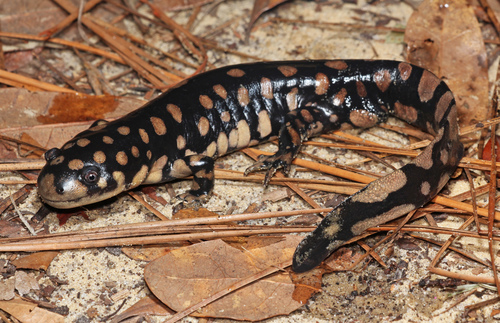
Tiger Salamander
The Tiger Salamander, Ambystoma tigrinum, dazzles with its vibrant yellow blotches on a dark body. This nocturnal predator thrives across North America's forests and grasslands, playing a crucial role in controlling insect populations. Its adaptability and distinct pattern make it a fascinating subject of both study and admiration.
10-15 years
Lifespan
113.0 - 227.0 g
Weight
Brown, Grey, Yellow, Black, Green
Color
10 mph
Top Speed
Least Concern
Conservation Status
Stable
Population Trend
Characteristics
Ambystoma tigrinum, commonly known as the Tiger Salamander, is a robust amphibian found in North America. It thrives in diverse habitats, from forests to grasslands. Distinguished by its striking yellow or olive-green blotches on a dark body, it is nocturnal and carnivorous, often preying on insects and small invertebrates.
Distribution Range of the Tiger Salamander
The Ambystoma tigrinum, commonly known as the Tiger Salamander, is native to North America. Its geographical distribution includes parts of southern Canada, the United States, and northern Mexico. In the United States, it is found in a wide range of states from the East Coast, throughout the Midwest, to the West Coast, and extending into the southern states.
Tiger Salamander's Habitat
Environmental Conditions
Tiger Salamanders typically inhabit regions with moist soil and access to water bodies such as ponds, marshes, and slow-moving streams. They prefer environments with temperate climates and are often found in grasslands, woodlands, and forests. The species requires moist environments for breeding and larval development, which usually take place in temporary water bodies that fill during rainy seasons.
Ecological Niche
As a terrestrial amphibian, the Tiger Salamander plays a role in controlling insect populations, feeding on a variety of invertebrates. Its larval stage, which occurs in aquatic environments, also contributes to aquatic ecosystem dynamics. The species has adapted to a wide range of habitats in part due to its ability to burrow underground, which helps it survive periods of drought or extreme temperatures.
Copyright @ Nature Style Limited. All Rights Reserved.
 English
English